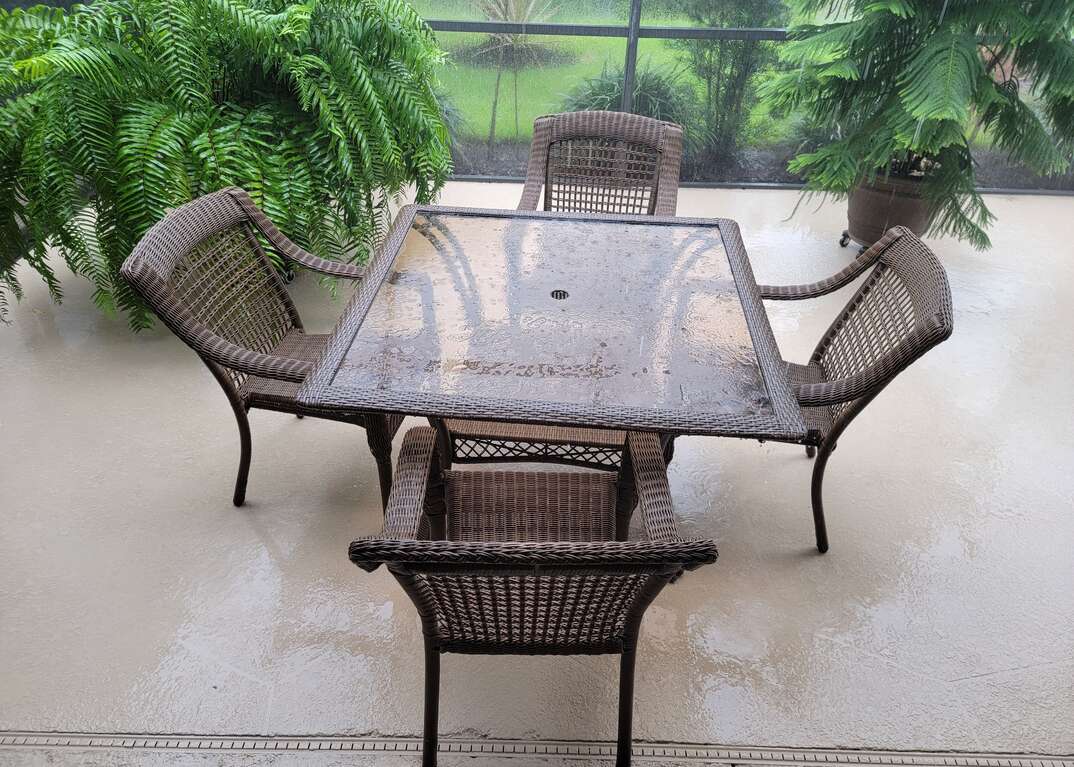How to Install Gutter Guards

Installing Gutter Guards at a Glance
- Tools & Materials: Ladder, tape measure, trowel, gloves, tin snips, pry bar, pliers, drain snake
- Step 1: Prep gutters
- Step 2: Install first guard
- Step 3: Overlap sections
- Step 4: Join corners
Cleaning gutters is a seasonal maintenance chore that most homeowners dread. Not only is it a pain, but using a ladder to access your gutters can be outright dangerous. Unfortunately, neglecting to clean your gutters can have disastrous consequences on your home, since the gutters are your home’s first line of defense against water damage. If the gutters are clogged with leaves, pine needles and other debris, they can start to overflow and cause extensive damage to your roof, siding and fascia.
The good news is that manually cleaning your gutters twice a year isn’t the only way to prevent this costly damage from happening. Installing gutter guards onto your gutters can practically eliminate the need for manual cleaning, while also protecting the gutters from mid-winter clogs and damage. If you want to learn how to install gutter guards, read on.
Can I Install Gutter Guards Myself?
Whether or not you can install gutter guards yourself largely depends on the type of gutter guards you choose, how experienced and comfortable you are working from a ladder and the pitch (slope) of your roof.
Generally speaking, if you possess basic home-improvement skills and know how to safely work from a ladder, you should be able to install gutter guards yourself. That being said, potentially complicating factors include steep roof pitches, gutters located on upper stories and similar hazardous conditions.
You should consider hiring a professional to install your gutter guards if you aren’t sufficiently equipped, experienced or comfortable working from a ladder — especially if your roof presents additional safety considerations.
Tools & Materials
- Extension Ladder
- Tape measure
- Hand trowel or gutter scoop
- Gloves
- Tin snips
- Pry bar
- Pliers
- Drain snake (optional)
Installing Gutter Guards: 4 Steps
Before purchasing your gutter guards, measure the length and width of your gutters to determine the size and amount of gutter guards you’ll need. Most gutter guards are available in 4-inch, 5-inch and 6-inch widths to accommodate the most common gutter widths. They usually come in 3-foot long sections.
While there are several different types of gutter guards to choose from, surface-tension gutter guards are among the most common and highly recommended. They’re also the variety the following installation instructions are intended for. That being said, many of the same steps can be used for other types — like gutter guard screens and micro-mesh guards — as well. In any case, follow the specific instructions provided by the manufacturer to ensure proper installation.
Step 1: Prepare Your Gutters
Your gutters should be thoroughly cleaned prior to installing the gutter guards to avoid the possibility of gutter clogs after the guards have been installed. Set up your extension ladder so that you can safely and securely access your gutters, and begin removing leaves and large debris with a gloved hand, hand trowel or gutter scoop.
Next, run water from a garden hose into the gutters to remove any residual material and to verify that the gutters and downspouts are functioning properly. If you encounter a downspout that’s clogged at the top, disconnect the downspout from the “gutter outlet” (the protruding section on the bottom of the gutter where water drains into the downspout) and manually remove the source of the clog. For clogs at the bottom of the downspout, you can insert the end of a drain snake (used for unclogging plumbing drains) into the bottom outlet of the downspout to clear the clog.
Step 2: Install the First Gutter Guard
Starting at one end of your gutters, use a flat pry bar to carefully lift up the ends of the shingles at the edge of your roof. Insert the back end of the gutter guard underneath the raised shingles and align the front locking edge of the guard with the front lip of the gutter.
Use moderate pressure to press the front of the gutter guard onto the lip of the gutter until it “snaps” into place. If there are bent sections along the front lip of the gutter that are causing it to misalign with the locking edge of the gutter guard, use a pair of pliers to straighten out the lip.
Step 3: Overlap Adjacent Sections
After the first section of gutter guard has been installed, each subsequent section needs to overlap the previous one by at least 1/2 inch to strengthen the seam and prevent the formation of gaps.
In order for the top of the overlapping section to rest flat against the previous section, a 1/2-inch portion needs to be removed from the front locking edge of the overlapping section. Some gutter guards come with pre-cut corners, but most will need to be manually removed with a pair of tin snips.
Slip the back end of the prepared section underneath the shingles, then slide the top of the overlapping piece over the previous section until the locking edges are contacting. Press the locking edge of the overlapped piece onto the gutter’s lip until it snaps into place.
Continue these steps on the remaining length of the gutter. Once you arrive at the end of a gutter (unless it forms a corner; see more on that below), use your tin snips to cut the last section of gutter guard so that it’s flush with the end of the gutter.
Step 4: Join the Corners
When you arrive at an inside or outside corner formed by two adjoining gutters, use one of these two methods to join them together:
Option 1: Cut
The first method is to cut the end of each adjoining section at a 45-degree angle so that both ends butt up against each other. This creates a more attractive and professional appearance — which may be desirable if they’re visible from the ground or upper-story windows — but it also creates a more fragile seam that’s prone to separating over time.
Option 2: Overlap
Instead, you could overlap the guards. This method involves running the end of one section to the end of the corner and sliding the second section over the top of it. Just like with the standard overlapping procedure from the second step, the overlapping guard needs to have the length of the desired overlap removed from the corner of the front locking edge. You can use the same 1/2-inch overlap, or create a slightly larger one (like 1 to 1 1/2 inches, to add more strength to the seam. Corner seams tend to be more fragile, so providing additional strength with a slightly larger overlap can be beneficial.
Once all your gutters are covered, safely take down your ladder and dispose of any leftover waste material. If your gutter guards require periodic maintenance, follow the maintenance instructions and schedule recommended by the manufacturer.


